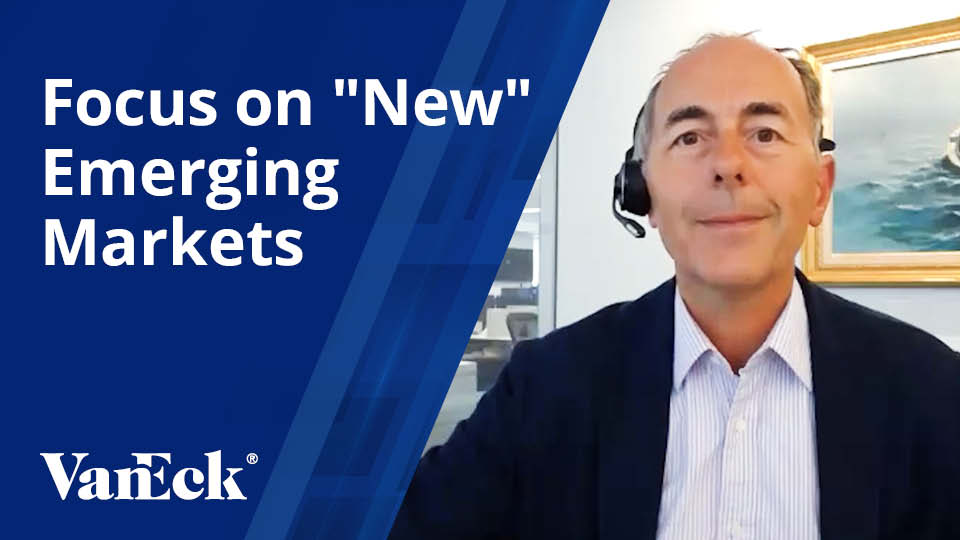Meet CEO Jan van Eck: From Macro Investor to Crypto Bull
10 October 2023
Read Time 6 MIN
Share with a Friend
All fields required where indicated (*)CEO Jan van Eck has always said the firm takes a macro approach to investing. Learn more about what he means by this and how this perspective led him to cryptocurrencies.
VanEck's rich history, grounded in macro investing and a unique investment philosophy, has shaped the company over the years. In this Q&A, CEO Jan van Eck shares his perspective on the firm’s journey, its investment strategies, and its foray into the world of cryptocurrencies.
- What do you think differentiates VanEck from other investment managers?
- What can investors learn from market history and how does your understanding of history shape your investment philosophy?
- When did you first notice Bitcoin?
- How should investors think about cryptocurrencies in their broader portfolio allocations?
- How will cryptocurrencies impact finance?
What do you think differentiates VanEck from other investment managers?
JAN VAN ECK: Our investment approach revolves around macro trends that impact financial markets. Unlike many investment firms that focus on specific stocks or sectors, we take a broader view, examining global trends such as wars, political instability, and technological advancements.
In a nutshell, we examine big global trends and evaluate how they will impact financial markets, as well as the potential opportunities and risks they create for investment portfolios. For example, the firm was founded on the premise that, particularly after World War II, international stocks — specifically from Europe, Germany, and Japan, as well as Asia — were growing at a faster rate. So there was significant growth potential in this area that had not fully entered the mainstream of traditional markets and therefore, was not a part of most investor portfolios.
But as macro investors we also have to make sure we’re looking at pervasive risks that might be under the radar. In 1968, the U.S. was performing well economically, but there were concerns about its large government spending policies and the rapid expansion of its money supply. My father, John van Eck, foresaw the risk of inflation in the U.S. and started looking for ways to hedge against that risk—one unusual option at that time, given its fixed price, was investing in gold.
One point to remember is how different the future can look from what you might imagine. No one thought the price of gold could reach anywhere close to today’s levels. This kind of dramatic change is often not on people's radar unless they have a historical perspective that allows them to entertain a wide range of possibilities.
Speaking of historical perspective, we know you are a big history buff. What can investors learn from market history and how does your understanding of history shape your investment philosophy?
VAN ECK: Predicting the future is difficult, but articulating potential outcomes and likelihood is a reasonable exercise. History can suggest an array of government policies and economic outcomes that may not be obvious at a point in time. History can also tell us a lot about the path of current trends.
For example, railroads, a vital technology of their time, were essentially complete around the 1860s in the U.S. However, there was a substantial increase in the market cap and stock prices of these companies before their full implementation. Investors correctly anticipated the potential profits from this new technology, but there’s risk in being too early. Even if your fundamental premise is correct, you can still experience significant losses. Railroad stocks peaked before 1860 and subsequently fell by over 50 percent, despite the continued development of the technology.
I reference this history when discussing cryptocurrencies, as a lesson from the past that holds relevance even today. Like railroads, cryptocurrencies could potentially be highly disruptive. However, being cautious of the volatile investment cycles is essential. Even if your investment thesis is correct, you could still lose money as an investor, making it a cautionary tale worth remembering.
When did you first notice Bitcoin?
VAN ECK: In 2017, I dove deep into the world of Bitcoin. As you can imagine, even in 2017, there were plenty of skeptics. I sought opinions from my colleagues, but they didn't have much insight into this emerging asset at the time. By listening to podcasts and reading white papers, I was able to develop a solid understanding of the technology behind cryptocurrencies. Although I'm not a computer scientist, I am familiar with how computers and databases are structured, which helped.
Following this research, I concluded that Bitcoin indeed had the potential to be included in our offering.
How should investors think about cryptocurrencies in their broader portfolio allocations?
VAN ECK: I believe there a different facets of cryptocurrencies overall and depending on what specifically is being discussed can fit into different parts of an investor’s portfolio. It's crucial to clarify that what I'm about to share cannot be empirically proven, because we can't predict the future. This is more of a mental model that guides my thinking.
Firstly, Bitcoin acts as a competitor or companion to gold. This is due to its scarcity value, which mirrors that of gold—indestructible not because of physical limits (like the finite amount of gold in the ground) but because of the algorithms underlying Bitcoin. So, it represents a store of value and offers protection against inflation.
Secondly, beyond Bitcoin, other cryptocurrencies represent applications akin to any other type of growth or technology investment. Be it healthcare, science, databases, cloud computing, 5G or 6G, these cryptocurrencies play a similar role. Say you own 50 stocks, with a split of 25 for growth and 25 for value. I would include a small allocation to these crypto related applications in that overall growth exposure.
In both cases, I believe you need it as a hedge to your financials and technology equity exposure. So, in a sense, similar to how Argentinians would rather hold U.S. dollar-linked stablecoins than the Argentinian peso that has almost 100% inflation, in your growth portfolio you'd like to have some allocation to a technology that could be a significant disruptor.
How will cryptocurrencies impact finance?
VAN ECK: The financial ecosystem has transitioned from being run by paper in the 1950s to programmed mainframe computers in the 1970s. Now, we’re facing the question of whether a decentralized financial ecosystem can be built.
My main concern is around the fragmentation of the financial system. Major financial institutions are working on blockchain applications, but private blockchains would be no different than having private mainframes. Also, regulatory bodies are moving at different speeds. Europe and Brazil, for instance, are advancing towards adopting tokenization and blockchain technologies to reduce costs for investors, while other countries like the U.S. are at a standstill.
Things are changing, and we need to recognize that. We can't predict how they will evolve, but we must stay aware and open to these developments.
DISCLOSURES
Bitcoin (BTC) is a decentralized digital currency, without a central bank or single administrator, that can be sent from user to user on the peer-to-peer bitcoin network without the need for intermediaries.
Important Disclosure
This is a marketing communication. Please refer to the prospectus of the UCITS and to the KID before making any final investment decisions.
This information originates from VanEck (Europe) GmbH, which has been appointed as distributor of VanEck products in Europe by the Management Company VanEck Asset Management B.V., incorporated under Dutch law and registered with the Dutch Authority for the Financial Markets (AFM). VanEck (Europe) GmbH with registered address at Kreuznacher Str. 30, 60486 Frankfurt, Germany, is a financial services provider regulated by the Federal Financial Supervisory Authority in Germany (BaFin).
The information is intended only to provide general and preliminary information to investors and shall not be construed as investment, legal or tax advice VanEck (Europe) GmbH, VanEck Switzerland AG, VanEck Securities UK Limited and their associated and affiliated companies (together “VanEck”) assume no liability with regards to any investment, divestment or retention decision taken by the investor on the basis of this information. The views and opinions expressed are those of the author(s) but not necessarily those of VanEck. Opinions are current as of the publication date and are subject to change with market conditions. Certain statements contained herein may constitute projections, forecasts and other forward-looking statements, which do not reflect actual results. Information provided by third party sources is believed to be reliable and have not been independently verified for accuracy or completeness and cannot be guaranteed. Brokerage or transaction fees may apply.
All performance information is based on historical data and does not predict future returns. Investing is subject to risk, including the possible loss of principal.
No part of this material may be reproduced in any form, or referred to in any other publication, without express written permission of VanEck.
© VanEck (Europe) GmbH / VanEck Asset Management B.V.
Sign-up for our ETF newsletter
Related Insights
Related Insights
10 October 2023
08 December 2023
10 October 2023




